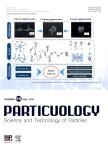Impact of reducing and capping agents on carbohydrates for the growth of Ag and Cu nanostructures and their antibacterial activities
作者机构:School of Chemistry and BiochemistryThapar Institute of Engineering and Technology Patiala 147004 Punjab India Department of Biotechnology Thapar Institute of Engineering and Technology Patiala 147004 Punjab India
出 版 物:《Particuology》 (颗粒学报(英文版))
年 卷 期:2019年第17卷第2期
页 面:219-226页
核心收录:
学科分类:08[工学] 0817[工学-化学工程与技术] 0805[工学-材料科学与工程(可授工学、理学学位)] 0703[理学-化学] 0702[理学-物理学]
基 金:Financial support from CSIR Govt. of India New Delhi
主 题:Green synthesis Ag and Cu nanoparticles Carbohydrate reducing agents Antibacterial activities
摘 要:This study presents a viable green synthesis approach to produce Ag and Cu nanoparticles (MNPs) by using carbohydrates such as glucose, fructose, sucrose, and starch as reducing agents and describes theirantimicrobial activities against Escherichia coli DH5a. Optical and diffused light scattering analyses showed the Ag NPs ranged from 20 to 75 nm and the Cu NPs varied from 20 to 160 nm, which supports the differences in their absorption bands (400-434 nm for Ag and 458-641 nm for Cu). The reducing sugars interacted differently with Ag^+ and Cu^2+ based on their size and hydrolysis by NaOH resulting in effective stabilization of Ag^0 and Cu^0 and variation in the bactericidal activities of the MNPs. The antibacterial effects of the MNPs were evaluated by measuring the inhibition zones using E. coli DH5a as a test organism. No growth was observed by restreaking different parts of the clearly inhibited zones into new culture plates indicating the bactericidal efficacy of the Ag and Cu MNPs. The Ag NPs were found to be more effective in terms of the size of their in hibition zones (1.21-1.82 cm) compared with those of the Cu NPs (0.0-1.2 cm). This study provides a promising basis for the formulation of a new gen eration of bactericidal agents.



